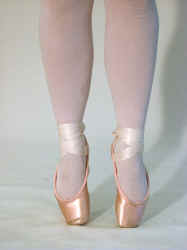
Original, box too short.
Not square on the platform.
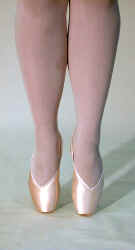
New fitting with
higher box and vamp.
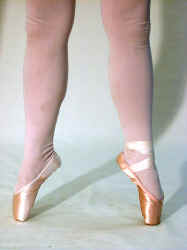
New shown left
Original shown right
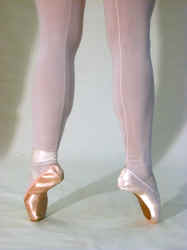
Original shown left
New shown right
|
EstherJuon.com POINTE SHOE RESEARCH |
|
Fitting Principles Research Lectures Publications |
| Esther Juon and her research into the fitting of Pointe shoes. |
|
Esther Juon has become very well known for her method of Pointe shoe fitting. Her work started in the 1980s when she attended all the pointe shoe fitting seminars held in London by GAMBA, PORSELLI, and FREED. Esther took her role as a pointe shoe fitter very seriously. She asked all her customers to bring their old Pointe shoes so that she could see what the dancers were wearing and how the new fitting compared with the old. |
||||
 Original, box too short. Not square on the platform. |
|
 New shown left Original shown right |
 Original shown left New shown right |
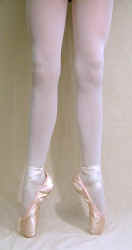 Original fitting |
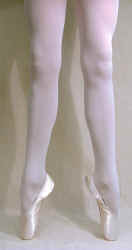 New fitting |
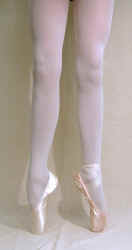 New on left foot Original on right foot |
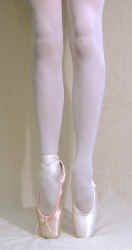 Original on left foot New on right foot |
|
Esther was astonished at the condition of many feet that she saw and the obvious lack of correct fitting. She started to photograph the dancers' feet in their existing shoes and then again in their newly fitted shoes. Wherever possible, she asked the dancers to let her keep their old Pointe shoes. The donated shoes were then dated and marked-up with the size and fitting of the replacement shoes. In this way, Esther collected a large box of old shoes with corresponding photos and it became clear that something needed to be done. It became obvious that the foot had to be supported anatomically correctly and with this min mind the Three pointe Support system of the foot was born. Esther experimented with different makes of shoes to find for each of her customers a correctly fitting shoe. At the same time, she became aware of a new Pointe shoe which had been designed after five years of medical research into why dancers' feet became so badly injured. These shoes are still made in the traditional way, but they support the foot deliberately through the metatarsal heads, the longitudinal arch and the heel, combined with a better method of positioning the ribbons. They also have a roll-through principal built in, which allows the sole to flex in the exact place of the "demi-pointe" position. Esther had now found a shoe that would fit and support the foot correctly. These shoes were added to her already large stock of shoes and all the new fittings were compared with the existing stock shoes. Every time, the new shoe fitted so much better than any other from her existing stock and so Esther ended up with hundreds of pairs of shoes she could no longer sell or return to the Manufacturers. These new shoes are made by Grishko of Russia. She then met Nicolai Grishko in 1995 through Dominique Hill of IDS ( the UK importer of Grishko Pointe shoes). Esther presented her work to Nicolai Grishko and he invited her to be the fitter of their shoes at the Dance World Exhibition in Earls Court, London, in the Spring of 1995.Her first book (Pointe Shoe Secrets) was launched at the same time. (see publications). |
|||
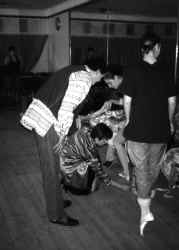
Esther fitting Pointe shoes at the Bolshoi Company |
Nicolai Grishko was so impressed with Esther's work that he invited her to Moscow in October 1995 to fit Pointe shoes the the dancers of the BOLSHOI ballet company, the Renaissance Ballet Company and to lecture at ballet schools and colleges in Moscow. This gave Esther an insight into the very different development of the Russian dancers and she was told that maturation of the young dancer in Russia takes place much earlier then in Western European dancers. The Russian dancers are selected for ballet at birth and usually come from a great line of dancers. Therefore their physical makeup is very different from the Western European average young ballet dancer. The Russian training too is very different and all this leads to Russian dancers being able to start pointe work much younger. Inspired by her experiences in Russia, Esther returned to the UK and became a member of Dance UK. She attended their lectures and conferences and learned about current research into growth spurt, bone density and the growth plates in the feet. Her research was continued and supported with the assistance of her friend and physiotherapist Dr Lucy Redhead. |
|
Esther became a member of the International Association of Dance, Medicine and Science (IADMS) and attended their lectures and conferences. Esther Juon presented the results of her work with Lucy Redhead to IADMS which was fully accepted at the Annual Conference held in Tring, near London, England in October 1999. |